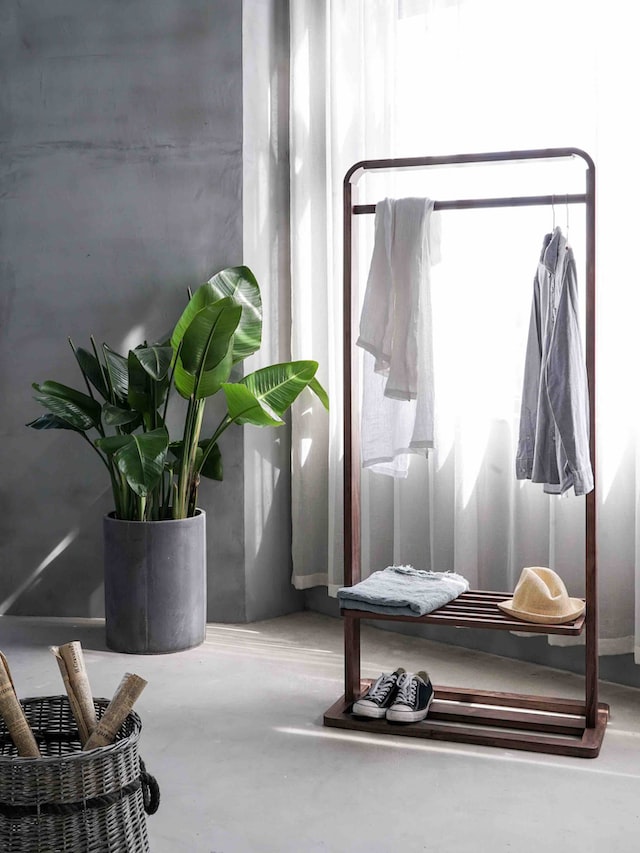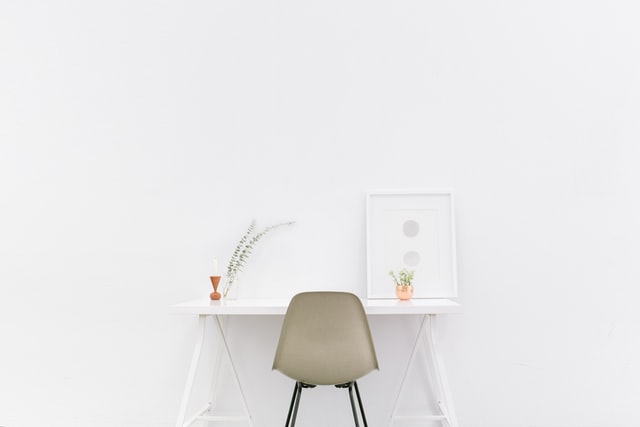Minimalism and essentialism are two distinct design and lifestyle philosophies that differ in their approach to simplicity and the elimination of excess. Minimalism is characterized by a focus on minimal forms, empty space, and the reduction of elements to their most basic and essential forms. Essentialism, on the other hand, emphasizes the importance of only retaining the most essential and necessary elements and simplifying one’s life by removing anything that is non-essential or non-valuable.
Defining Minimalism

Minimalism is a design and lifestyle philosophy characterized by a focus on simplicity and the reduction of elements to their most basic and essential form. This approach is characterized by a focus on minimal forms, empty space, and the use of simple, plain, and unadorned elements.
In the realm of design, minimalism is often associated with a clean, modern aesthetic that emphasizes the use of white space, simple color palettes, and a focus on functionality. This approach is often used in architecture, graphic design, product design, and other areas of design, and is intended to provide a sense of calm and simplicity, while also drawing attention to the beauty of the materials and forms being used.
In terms of lifestyle, minimalism involves reducing one’s possessions, simplifying one’s life, and focusing on what is most important and essential. This can involve decluttering and simplifying one’s living space, reducing the amount of possessions and clutter, and focusing on experiences and relationships over material possessions.
Minimalism is often seen as a reaction against consumerism and overconsumption, and is associated with values such as sustainability, simplicity, and mindfulness.
Defining Essentialism
(Photo by Thanos Pal on Unsplash )

Essentialism is a philosophy and approach to life that emphasizes the importance of only retaining the most essential and necessary elements, and simplifying one’s life by removing anything that is non-essential or non-valuable. This approach seeks to reduce distractions and focus on what is truly important and meaningful.
In terms of education, essentialism is an approach to curriculum design that focuses on teaching only the most important and fundamental knowledge and skills, rather than trying to cover a wide range of subjects or topics in a shallow manner.
In terms of lifestyle, essentialism involves reducing one’s possessions, simplifying one’s life, and focusing on what is most important and essential. This can involve decluttering and simplifying one’s living space, reducing the amount of possessions and clutter, and focusing on experiences and relationships over material possessions.
Essentialism is often seen as a reaction against consumerism and overconsumption, and is associated with values such as simplicity, focus, and purpose. By focusing on what is truly important, essentialists believe that it is possible to lead a more fulfilling and meaningful life.
Minimalism and Essentialism – Differences
Minimalism and essentialism are two distinct design movements that have gained popularity in recent years, particularly in the realm of architecture, interior design, and consumer goods. While they may appear similar at first glance, they have distinct differences that set them apart.
Minimalism is a design philosophy characterized by simplicity, functionality, and the use of minimal elements. It is characterized by clean lines, neutral colours, and a lack of ornamentation or unnecessary details. The focus is on creating a sense of spaciousness, calmness, and order. Minimalist design often aims to create a sense of elegance and sophistication through the use of simple, uncluttered forms.
Looking at it another way, essentialism is a philosophy that emphasizes the importance of focusing on what is truly necessary or essential and discarding anything that is unnecessary or extraneous. In design, essentialism is often reflected in the use of simple forms and a focus on the functional aspects of a product or design. The essentialist design prioritizes the needs and desires of the user, rather than focusing on aesthetics or the latest trends. The goal is to create products and spaces that are both functional and meaningful.
minimalism and essentialism both strive for simplicity, but they do so for different reasons. Minimalism emphasizes the visual and aesthetic aspects of design, while essentialism emphasizes functionality and the needs of the user. Both approaches can result in beautiful and functional designs, but the approach and priorities are different.
Why Essentialism is Important
In a world where we are constantly bombarded with choices, it can be difficult to know what is truly important. This is where essentialism comes in. Essentialism is the philosophy that less is more. It is about quality over quantity. It is about focus and intention.
Essentialism is important for several reasons:
- Clarity and Focus: Essentialism helps to eliminate distractions and distractions and helps us to focus on what is truly important. By identifying what is truly essential in our lives, we can prioritize our time and energy accordingly.
- Increased Productivity: By focusing on what is essential, we can eliminate activities and tasks that are not meaningful or necessary. This can lead to increased productivity and a more fulfilling life.
- Improved Decision-Making: Essentialism helps us to make better decisions by forcing us to consider what is truly important. It helps us to avoid overcommitting and to avoid making decisions based on external pressures.
- Simplification: Essentialism simplifies our lives by removing clutter and distractions, and focusing on what truly matters. This can lead to a sense of peace and calm, and a greater appreciation for the things that are truly important.
- Better Relationships: By focusing on what is essential, we can eliminate time-wasting activities and improve the quality of our relationships. We can also spend more time with people who matter to us and create deeper and more meaningful connections.
In short, essentialism is important because it helps us to simplify our lives, prioritize what is truly important, and make better decisions. By focusing on what is essential, we can lead a more fulfilling life and create a sense of purpose and meaning in everything we do.
Why Minimalism is Important
Minimalism is important for several reasons:
- Stress Reduction: Minimalism can help to reduce stress by creating an environment that is calm and uncluttered. A minimalist approach to design can help to create a sense of peace and tranquility, which can be beneficial for mental and emotional well-being.
- Increased Productivity: A minimalist environment can help to increase productivity by reducing distractions and allowing us to focus on the task at hand. By eliminating clutter and distractions, we can concentrate on what is important and get more done.
- Simplification: Minimalism simplifies our lives by reducing the number of possessions and distractions that we have to deal with on a daily basis. This can lead to a sense of freedom and lightness, and a greater appreciation for the things that are truly important.
- Cost Savings: Minimalism can help to save money by reducing the need for multiple possessions and instead focusing on a smaller number of high-quality items that are both functional and aesthetically pleasing.
- Environmental Responsibility: Minimalism can promote environmental responsibility by reducing waste and encouraging us to consider the impact of our purchases on the environment. By reducing our possessions and focusing on what is truly important, we can live a more sustainable life.
In conclusion, minimalism is important because it helps to reduce stress, increase productivity, simplify our lives, save money, and promote environmental responsibility. By embracing a minimalist approach to design, we can lead a more fulfilling life and create a sense of peace and tranquility in everything we do.
How to Practice Essentialism and Minimalism in Your Life
Practicing essentialism and minimalism in your life can be a transformative experience. Here are some tips to get started:
- Identify your values: The first step in practicing essentialism is to identify what is truly important to you. Take some time to reflect on your values, goals, and priorities, and focus on what is truly essential in your life.
- Eliminate distractions: Once you have identified what is truly important, begin to eliminate distractions and activities that are not aligned with your values. This could mean reducing your time on social media, cutting back on unnecessary commitments, or decluttering your physical environment.
- Prioritize your time: Use your newfound clarity to prioritize your time and focus on what is truly essential. Make sure to allocate time for the activities and people that are most important to you.
- Simplify your possessions: Embrace a minimalist approach to material possessions and focus on owning only what you truly need and love. Declutter your home, reduce your number of possessions, and simplify your life.
- Live in the present: Essentialism encourages us to live in the present moment, focusing on what is happening right now, rather than what has happened in the past or what might happen in the future.
- Focus on quality over quantity: Minimalism encourages us to focus on quality over quantity. Rather than owning multiple possessions that are of mediocre quality, focus on owning a smaller number of high-quality items that are functional and aesthetically pleasing.
By embracing these principles, you can practice essentialism and minimalism in your life, and lead a more fulfilling and purposeful life. Remember that the journey is a gradual process, and it’s important to be kind to yourself and enjoy the process.
What is the difference between minimalism and simplicity?
Minimalism and simplicity are often used interchangeably, but they have some differences.
Minimalism is a design and lifestyle movement characterized by an emphasis on simplicity and the elimination of excess. Minimalism often involves reducing the number of possessions and distractions in our lives, and focusing on what is truly important.
Simplicity, on the other hand, refers to the idea of living a straightforward and uncluttered life. It’s about removing complexities and focusing on what is essential. Simplicity can apply to many areas of life, including relationships, work, and personal habits.
In essence, minimalism is a manifestation of simplicity in design and possessions, while simplicity is a broader concept that can apply to many aspects of life. Both minimalism and simplicity share the same goal of reducing complexity and focusing on what is essential, but minimalism is more focused on design and possessions, while simplicity is a broader lifestyle choice.
What is the opposite of minimalism? and how is it disadvantageous?
The opposite of minimalism is maximalism. Maximalism is characterized by an emphasis on abundance, ornamentation, and the use of bold colors and patterns. Maximalism is the complete opposite of minimalism, as it involves adding more elements and layers to a design, rather than simplifying and reducing.
Maximalism can be disadvantageous in several ways:
- Clutter: Maximalism often leads to clutter, as the focus is on adding more items and decorations, rather than reducing and simplifying. This can lead to an environment that is visually overwhelming and can be distracting.
- Stress: A cluttered and visually overwhelming environment can increase stress levels, as our brains have to process more information and stimuli.
- Difficult to maintain: Maximalism can be difficult to maintain, as it often involves adding more elements to a design, rather than simplifying and reducing. This can lead to a sense of disorganization and chaos, which can be difficult to manage.
- Costly: Maximalism often involves adding more items and decorations, which can be costly and unsustainable in the long run.
- Lack of focus: Maximalism can be distracting and lack focus, as the focus is on adding more elements and decorations, rather than simplifying and reducing. This can lead to a lack of clarity and direction in both design and lifestyle.
maximalism is the complete opposite of minimalism, and can be disadvantageous in several ways, including leading to clutter, stress, difficult maintenance, cost, and lack of focus. By embracing minimalism, we can create a more peaceful, calming, and focused environment.
Are there any disadvantages of minimalism and essentialism?
While minimalism and essentialism can offer many benefits, they can also have some disadvantages. Here are a few:
- Lack of creativity: Minimalism and essentialism can limit creativity by restricting the number of choices and possessions, and focusing on simplicity and function. This can make it difficult to express personal style and individuality.
- Boredom: With a focus on simplicity, minimalism and essentialism can lead to a feeling of boredom and lack of excitement. This can be particularly true for those who enjoy variety and abundance.
- Difficulty adapting to change: By simplifying and reducing, minimalism and essentialism can make it difficult to adapt to change, as there may be fewer options and resources available.
- Lack of comfort: Minimalism and essentialism can be uncomfortable for those who are used to having a lot of possessions and choices, and may find it difficult to adjust to a more limited environment.
- Social isolation: By focusing on simplicity and reduction, minimalism and essentialism can lead to social isolation, as there may be less opportunities for social interaction and connection.
It’s important to keep in mind that these disadvantages can be mitigated by finding a balance between minimalism and essentialism, and personalizing the principles to suit individual needs and preferences. The key is to find a way to live a fulfilling and purposeful life, without sacrificing comfort, creativity, or connection.
Featured Image by Bench Accounting on Unsplash









